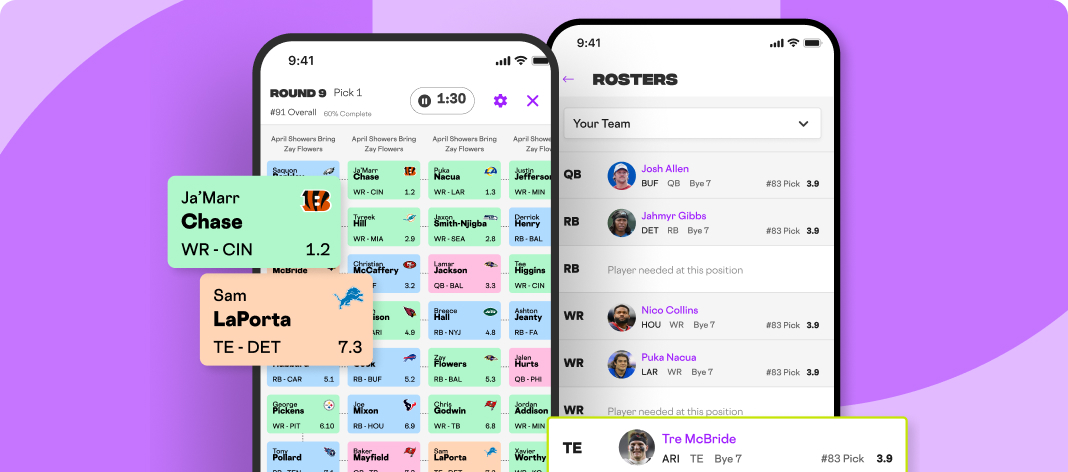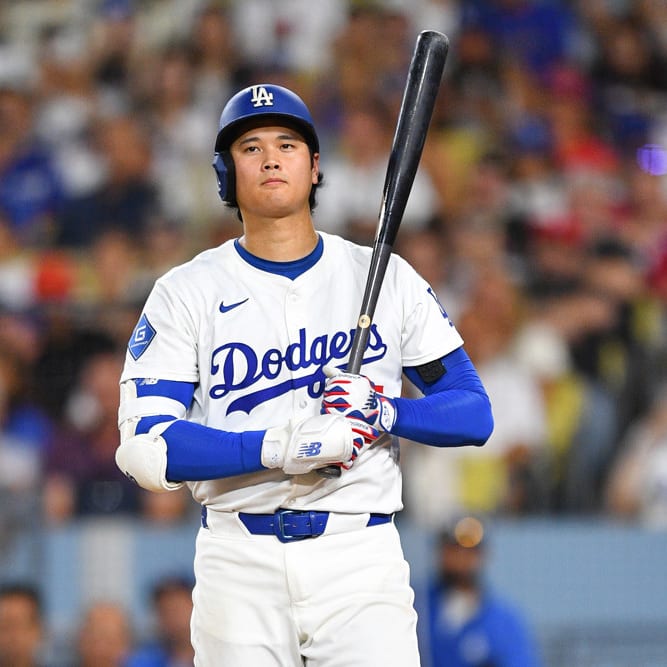Often, to figure out where we are going, it helps to understand where we've been. The first two months of the 2021 MLB campaign were wacky thanks to lingering COVID-19 effects and a new ball. Not to mention, cold and wet conditions plagued the Atlantic Coast and Midwest.
The final four months are already off to a precarious start with MLB reportedly cracking down on the substances pitchers use to (in theory) improve their grip. In reality, the added tackiness vastly increases the spin rate of certain pitches.
What follows is an examination of four elements of play affecting the first two month of the season. The associated data will be compared to that in April and May from 2017-2019. When applicable, the number will be presented by month. The four factors investigated will be:
- The Ball
- Strikeouts
- BABIP
- Spin Rate
The Ball
The initial reports suggested the 2021 baseball would reduce average exit velocity since the outermost string was not wrapped as tightly. This resulted in less string which also slightly reduced the weight of the ball. In addition, the seams were said to be a bit higher.
Here is a breakdown of the component average exit velocity. Unless otherwise stated, everything presented excludes pitchers in the batter's box.
KEY:
- GB – ground ball
- FB - fly ball
- ILD - infield line drive
- OLD – outfield line drive
| Season | Overall | GB | FB | ILD | OLD |
|---|---|---|---|---|---|
2017 | 88.1 | 84.3 | 91.0 | 86.9 | 94.3 |
2018 | 89.3 | 86.9 | 91.7 | 86.8 | 94.5 |
2019 | 89.3 | 86.6 |
Often, to figure out where we are going, it helps to understand where we've been. The first two months of the 2021 MLB campaign were wacky thanks to lingering COVID-19 effects and a new ball. Not to mention, cold and wet conditions plagued the Atlantic Coast and Midwest.
The final four months are already off to a precarious start with MLB reportedly cracking down on the substances pitchers use to (in theory) improve their grip. In reality, the added tackiness vastly increases the spin rate of certain pitches.
What follows is an examination of four elements of play affecting the first two month of the season. The associated data will be compared to that in April and May from 2017-2019. When applicable, the number will be presented by month. The four factors investigated will be:
- The Ball
- Strikeouts
- BABIP
- Spin Rate
The Ball
The initial reports suggested the 2021 baseball would reduce average exit velocity since the outermost string was not wrapped as tightly. This resulted in less string which also slightly reduced the weight of the ball. In addition, the seams were said to be a bit higher.
Here is a breakdown of the component average exit velocity. Unless otherwise stated, everything presented excludes pitchers in the batter's box.
KEY:
- GB – ground ball
- FB - fly ball
- ILD - infield line drive
- OLD – outfield line drive
| Season | Overall | GB | FB | ILD | OLD |
|---|---|---|---|---|---|
2017 | 88.1 | 84.3 | 91.0 | 86.9 | 94.3 |
2018 | 89.3 | 86.9 | 91.7 | 86.8 | 94.5 |
2019 | 89.3 | 86.6 | 91.7 | 87.4 | 94.6 |
2021 | 88.5 | 85.9 | 92.0 | 86.9 | 95.0 |
Sorry, but I don't know exactly how infield and outfield line drives are differentiated and I am also unclear how the data distinguished outfield line drives and fly balls. That said, since all we're doing is comparing different seasons, so long as the data is consistently derived each year, the comparisons are apt. For what it's worth, based on the low velocity of infield line drives, I'm assuming a low, hard hit liner going between two fielders is termed an outfield line drive since it lands beyond the infield dirt.
The overall average exit velocity is a weighted average of the components so it's best to look at each batted ball type separately. Despite a reduced coefficient of restitution, the average exit velocity of fly balls and outfield line drives increased. One possible explanation is Physics 101. Be it momentum (mass times velocity) or kinetic energy (mass times velocity squared), the same momentum or energy from the batter's swing will result in a higher exit velocity from a lighter ball. Higher pitch velocities could also manifest in increased exit velocities.
One of the narratives of the first third of the season was how poorly lofted balls carried. Let's take a look at average distance in feet.
Fly Balls
Season | April | May | Overall |
|---|---|---|---|
2017 | 320.3 | 321.2 | 320.8 |
2018 | 315.0 | 315.9 | 315.5 |
2019 | 322.6 | 323.8 | 323.2 |
2021 | 319.3 | 316.9 | 318.0 |
From 2017-2019, the ball traveled further as the weather warmed. Be it cooler temperatures, winds, or something else, the ball lost distance in May. It should be noted the average exit velocity of fly balls in May was 0.2 mph higher than April, so that is not the reason.
The 2021 data corroborates the notion the ball isn't carrying, despite being hit harder. The likely cause is increased air resistance incurred via the higher seams. Many are referencing a dead ball, but that isn't accurate. The ball is livelier; it just isn't traveling as far.
Outfield Line Drives
Season | April | May | Overall |
|---|---|---|---|
2017 | 388.8 | 391.1 | 390.1 |
2018 | 391.7 | 388.3 | 390.1 |
2019 | 388.7 | 387.7 | 388.2 |
2021 | 394.5 | 396.5 | 395.4 |
Assuming the above isn't due to a change in the manner the batted balls were classified, this is intriguing. Outfield line drives are not hit as high as fly balls, so they aren't subject to the same level of wind resistance. Plus, they probably have more backspin, helping to counter gravity. The result is the higher exit velocity is inducing longer distances.
Let's look at home runs, presented as home runs per fly ball and home runs per outfield line drive.
Fly Balls
| Season | April | May | Overall |
|---|---|---|---|
2017 | 16.4% | 17.1% | 16.8% |
2018 | 15.3% | 17.1% | 16.2% |
2019 | 18.3% | 19.6% | 19.0% |
2021 | 16.4% | 16.5% | 16.5% |
This makes sense. From 2017-2019, home runs increased from April to May but just as suggested by average fly ball distance, 2021 did not follow suit. Yes, it ticked up, but not nearly the extent as normal.
Outfield Line Drives
| Season | April | May | Overall |
|---|---|---|---|
2017 | 3.8% | 4.0% | 3.9% |
2018 | 2.8% | 2.5% | 2.6% |
2019 | 3.7% | 2.8% | 3.3% |
2021 | 2.9% | 2.2% | 2.5% |
Now we're getting weird. Longer average distance should result in more homers, but there were fewer in May. Conspicuously absent to this point are the yearly distributions of the four batted ball types:
Season | GB | ILD | OLD | FB |
|---|---|---|---|---|
2017 | 47.2% | 1.6% | 23.4% | 27.8% |
2018 | 46.3% | 1.6% | 23.6% | 28.6% |
2019 | 45.6% | 1.6% | 24.0% | 28.8% |
2021 | 46.1% | 1.5% | 22.2% | 30.2% |
I don't want to delve too much into this, but I also don't want to leave you hanging without possible explanations. There are more fly balls this season. Hopefully, it isn't a matter of altering the manner batted balls are classified. It may just be a few lofted balls very close to the delineation point are skewing the data, in which case that should get fleshed out with another four months of play.
Even so, it's curious how the percentage of line drive homers fell in May. Keep in mind homers correlate better with fly ball distance, not home run distance, so line drives too low to leave the yard would skew the math. I think the best conclusion from the home run data is that batters with higher exit velocities, but lower launch angles, aren't as negatively affected as those specializing in majestic shots or hitters with lower exit velocities that rely on a higher launch angle to reach the fences.
Strikeouts
In a previous study I asked, What is Behind the Increase in Strikeouts? In brief, I discovered much of the added punchouts emanated from off-speed stuff and from working higher in the zone. A major factor omitted from the study was the influence on National League pitchers stepping back into the batter's box. Here are strikeout rates from 2017-2019 and 2021, breaking out pitchers' plate appearances.
Season | AL no P | NL no P | NL P | MLB no P | MLB |
|---|---|---|---|---|---|
2017 | 21.4% | 20.6% | 35.8% | 21.0% | 21.5% |
2018 | 22.0% | 21.6% | 41.6% | 21.8% | 22.4% |
2019 | 22.6% | 22.1% | 42.2% | 22.3% | 22.9% |
2021 | 24.0% | 23.2% | 46.3% | 23.6% | 24.2% |
There isn't a ton to be gleaned from the data; it was mostly to satisfy my curiosity. That said, pitchers are fanning at an elevated clip, but not nearly enough to account for the 2021 spike.
BABIP
Along with the increase in strikeouts, the first two months of the season featured a lower than usual BABIP. Here it is, broken down by components, again removing pitcher data.
Season | Overall | GB | FB | ILD | OLD |
|---|---|---|---|---|---|
2017 | 0.296 | 0.248 | 0.125 | 0.204 | 0.668 |
2018 | 0.296 | 0.245 | 0.117 | 0.170 | 0.682 |
2019 | 0.296 | 0.238 | 0.125 | 0.138 | 0.672 |
2021 | 0.289 | 0.233 | 0.125 | 0.112 | 0.694 |
Khris Davis has nothing on MLB. The leaguewide BABIP excluding pitchers was identical from 2017-2019. However, it dipped seven points this season. Looking at the components, the driving force was grounders, with fewer soft liners sneaking through as well.
This is something I want to research further, but the most logical explanation is defensive positioning. How teams align their fielders would affect both groundballs and infield line drives. I don't think it is a coincidence both are on a declining path. Keep in mind, a defensive shift has a specific definition. To be classified as a shift, three infielders need to be on the same side of the diamond. If one of the middle infielders is just to their side of the keystone, it technically isn't a shift. For this reason, shift data doesn't tell the whole story, so when you hear "shifting doesn't make that much of a difference", it is likely ignoring defensive positioning that doesn't get distinguished as a shift.
The fantasy implications of this are more backwards-looking, as a means of explaining why a batter may be posting a lower than expected BABIP. Of course, that helps set expectations for the future. The Holy Grail would be to unearth players being played differently than normal, with an eye on whether their BABIP is affected.
Spin Rate
Here are the spin rates and velocities of several pitches over the same time frame as the earlier studies.
Spin Rate (rpm)
| Season | Four-Seam | Two-Seam | Slider | Curve | Cutter | Splitter | Change |
|---|---|---|---|---|---|---|---|
2017 | 2265.2 | 2155.3 | 2353.8 | 2495.2 | 2332.6 | 1485.3 | 1784.0 |
2018 | 2266.9 | 2148.2 | 2403.1 | 2494.2 | 2352.1 | 1396.6 | 1779.5 |
2019 | 2286.2 | 2161.8 | 2429.1 | 2515.8 | 2363.2 | 1467.2 | 1808.5 |
2021 | 2315.3 | 2159.1 | 2457.0 | 2552.2 | 2415.0 | 1486.7 | 1785.3 |
Velocity (mph)
| Season | Four-Seam | Two-Seam | Slider | Curve | Cutter | Splitter | Change |
|---|---|---|---|---|---|---|---|
2017 | 92.9 | 91.9 | 84.3 | 78.3 | 88.2 | 84.4 | 83.9 |
2018 | 92.9 | 91.9 | 84.1 | 78.7 | 88.5 | 84.8 | 84.1 |
2019 | 93.2 | 92.3 | 84.5 | 78.9 | 88.3 | 85.3 | 84.5 |
2021 | 93.6 | 92.9 | 84.7 | 79.4 | 88.5 | 86.2 | 84.8 |
To be honest, this is also more to satisfy personal curiosity since it's clear (at least to me) MLB is about to do something about the sticky substances applied to the ball. I know some view a potential crackdown as a smokescreen to cover the league's tinkering with the ball, but my sense is something will be done. Once we know what that something might be, we can try to discern which pitchers will be hurt the most.
Velocity is indeed also increasing, but my focus is spin. Keep in mind spin is good for some offerings and bad for others. This doesn't even consider useful spin, but that's beyond the scope of this discussion. Four-seam fastballs and pitches with horizontal movement rely on spin for effectiveness.
The backspin on a four seamer induces a Magnus effect which counters gravity, fooling the hitter into seeing a rising effect. The ball isn't rising, but the greater the spin, the less it drops so a batter swings under the ball, usually hitting a harmless pop-up or flyball.
Sliders, curveballs and cutters require spin for their side-to-side movement. They obviously also drop due to gravity, so it's the combination of horizontal movement into or out of the strike zone along with their drop that generates their effectiveness.
Changeups and splitters are designed to look like a fastball, but the change in speed and vertical drop affect the batter's timing. Since gravity does the work, these pitches do not need spin to be effective.
As anticipated, offerings requiring spin are all trending upward, hence the concern from the commissioner's office. The increase is too much to emanate from just a handful of hurlers. There is almost assuredly leaguewide abuse of what is being applied to the ball to "improve grip".
Obviously, noted spin artists Gerrit Cole and Trevor Bauer are under the most scrutiny, while someone like Hyun Jin Ryu can likely rest a little easier since his bread and butter is a changeup.




































